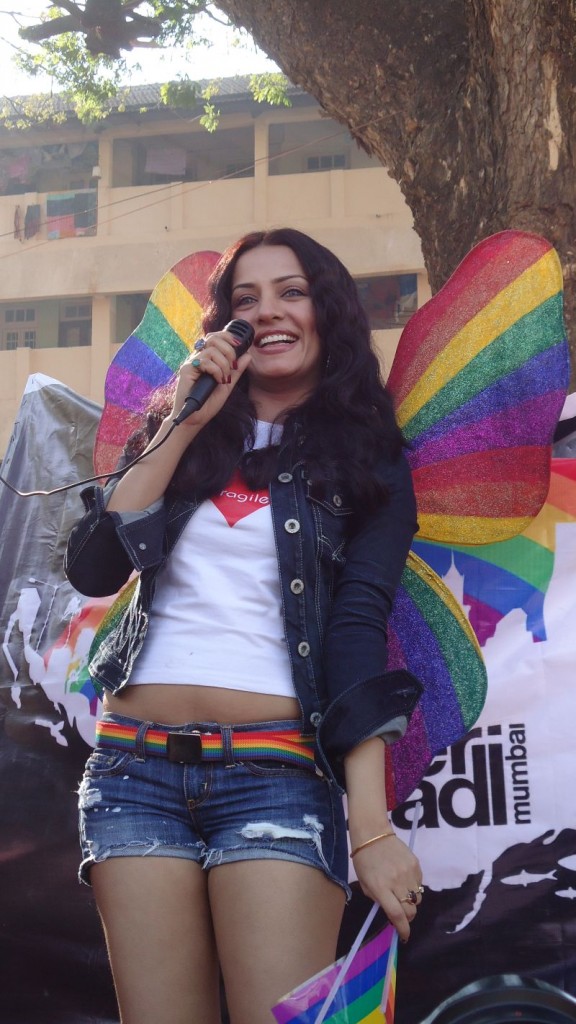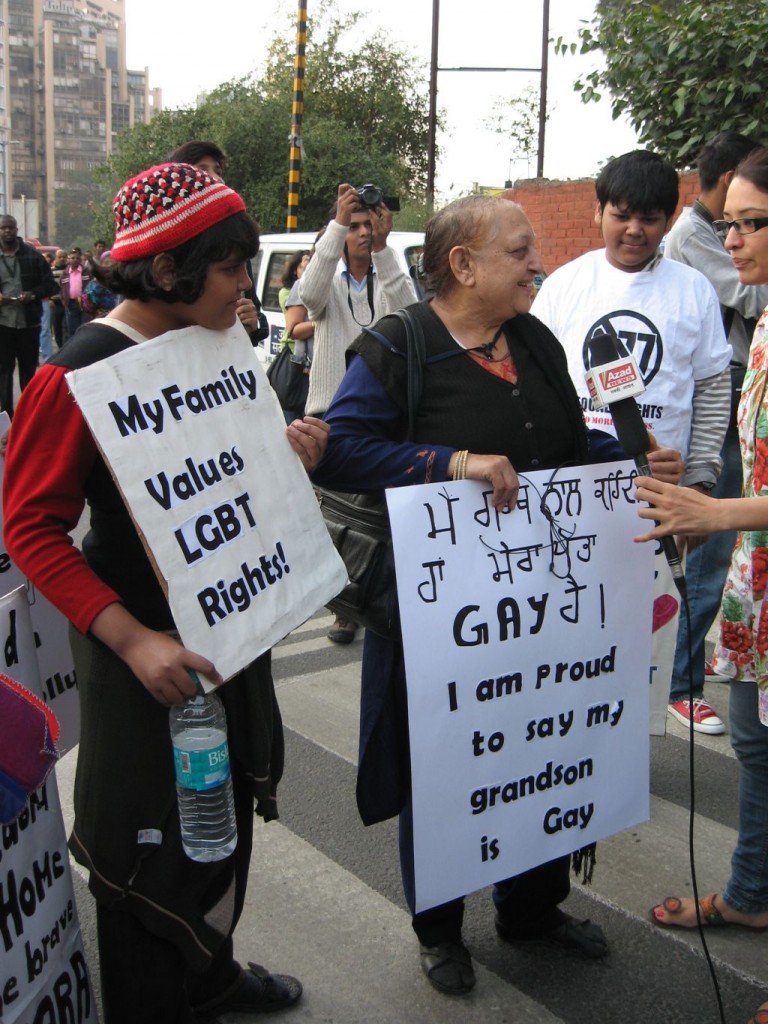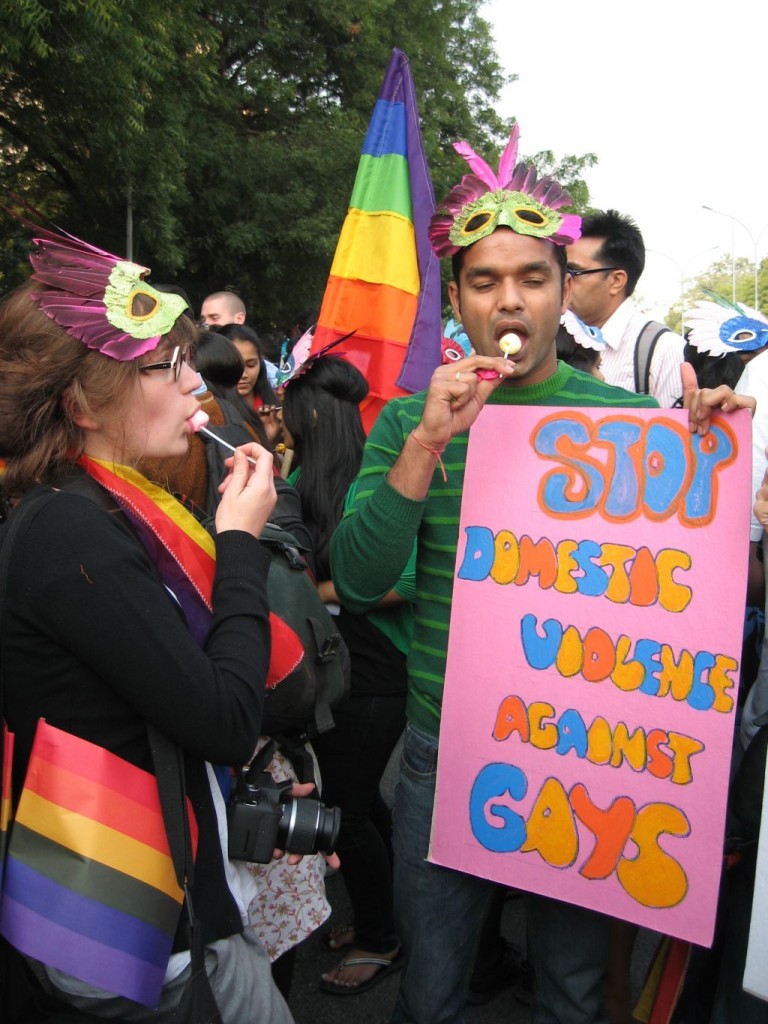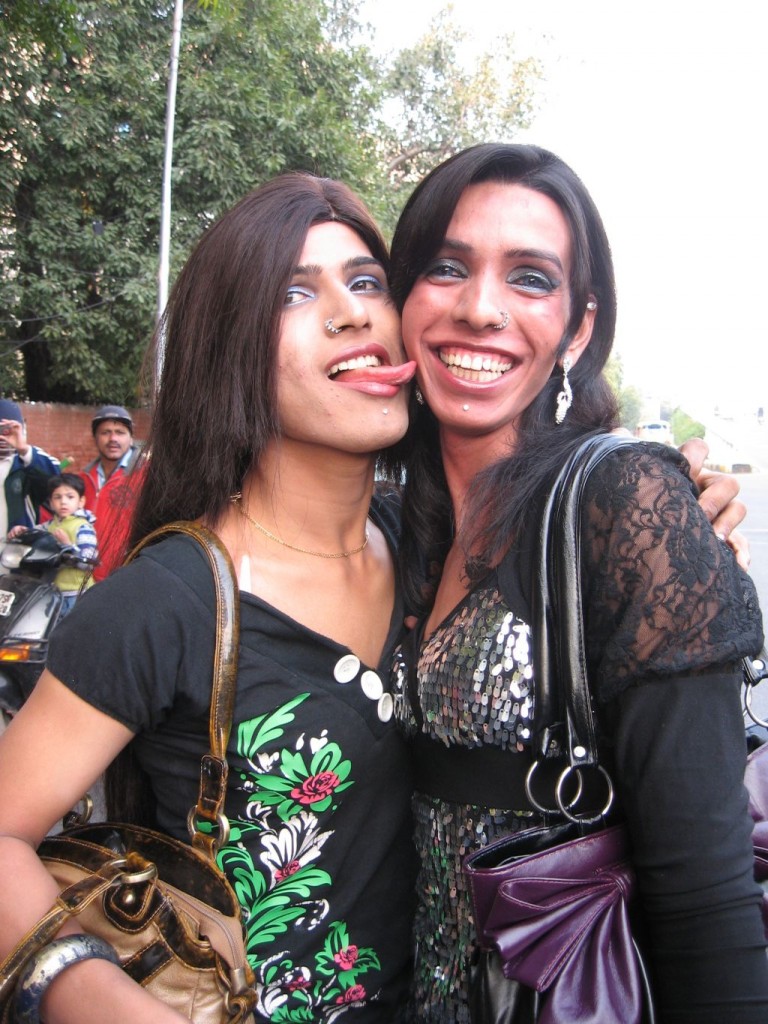Mumbai – The Place of the Most Happening Gay Events in India
Mumbai, known for hosting some of the most happening gay events in India, held its annual pride march on the 29th of January, and I went to attend it. The parade was organized by the Humsafar Trust, the biggest organization working on LGBT rights in Maharashtra. In earlier years, the pride march was held on the 16th of August, but this year the date was changed because of the hot and humid weather conditions in Mumbai during that month. The earlier date carried symbolic value as it came right after Independence Day. The idea was that although India got its independence on the 15th of August 1947, the gay community in India had yet to achieve its own independence, so pride was celebrated the very next day.
Celina Jaitely at the Parade
I had already attended the Mumbai pride parade in 2009, so I felt it was a good decision to change the date this year. The parade began at Azad Maidan, the same starting point as last year, and ended at Girgaum Chowpatty, a walk of around 5–6 kilometers. By the time I arrived at Azad Maidan, a few hundred people had already gathered and speeches were going on. Soon after, Bollywood actress Celina Jaitely arrived, which brought extra energy to the participants.
Celina has always supported LGBT issues and has been associated with many NGOs working in this field. She once even admitted that her ex-boyfriend was homosexual. She is one of the most recognized celebrities standing up for LGBT rights in India, and I have seen her in several interviews talking about equal rights. I had also seen her in the 2009 parade. It is always inspiring when celebrities join such events and support the cause.
Azaad Bazaar
After speeches from Celina and other activists, the parade finally started. One new thing this year was that Humsafar Trust had opened India’s first LGBT-friendly store in Mumbai called Azaad Bazaar, meaning “Independent Market” in Hindi. They promoted it during the parade. I really liked the idea of having a dedicated place for the LGBT community. In India, LGBT people face huge discrimination and are often mocked. They don’t always feel comfortable in public spaces. Stores like Azaad Bazaar can give them a place to shop freely and meet others. In fact, such places are not only useful but also create visibility and conversation in society. I strongly believe that open communication can solve a lot of problems, and initiatives like this encourage exactly that.
The Parade
The parade began with around 1500 people, but soon the number grew to between 2500 and 3000. The streets were filled with participants dancing, cheering, and celebrating. There were people from different parts of India and even foreign countries. This year’s pride was a beautiful mix of modern and traditional culture. While some participants were dressed in very modern outfits, others wore traditional clothing, performed folk dances, and sang traditional songs. I had once asked an officer at Humsafar Trust why so many people dressed traditionally, and he explained that it was intentional.
They wanted Mumbai pride not to become completely Western, and it’s always easier for society to accept change when it is rooted in local culture. Since India has one of the oldest histories of same-sex love in the world, blending tradition with pride makes perfect sense. I loved this idea. I also noticed fewer people wearing masks this year, which clearly showed that the LGBT community in Mumbai is becoming more open and confident in fighting for their rights.
Laxmi Narayan Tripathi and Manvendra Singh Gohil
The famous Hijra activist Laxmi Narayan Tripathi also joined the parade. I have met and interviewed her before and truly admire her work. I believe she is one of the most well-known Hijra activists not just in India but globally. Another familiar face I noticed was Manvendra Singh Gohil, who belongs to a royal family in Gujarat and is one of the very few openly gay royals in the world. I had seen him in the 2009 parade as well. After coming out, he faced tension within his family but chose to dedicate himself to LGBT activism, starting in Gujarat and later across India. He has even announced plans to adopt a child. Seeing someone from a royal family openly advocating for LGBT rights is powerful because royal families hold social influence, and their acceptance often inspires broader social acceptance.
Support from Families
Another positive change I saw this year was family support. Some participants carried placards saying things like “I am proud of my gay son,” “Proud of my gay grandson,” or “Proud of my gay brother.” Although these families may be very few in number, the fact that more and more relatives are standing beside their loved ones is a clear sign of change.
The parade ended at Girgaum Chowpatty with speeches by social activists demanding equal rights, including the legalization of same-sex marriage. While consensual gay sex has already been decriminalized in India, marriage equality and other rights are still not recognized. Personally, I feel legal changes may take time, but social attitudes are even slower to change. I have not yet seen much difference in everyday conversations about the LGBT community among people in India.
Reflections
The good thing, however, is that people have started talking about it more openly. I see more openly gay couples in society now, which is a clear sign of progress. At the same time, I think members of the LGBT community also need to be mindful of social norms. For example, during the parade, I saw a couple of participants lowering their pants and exposing themselves. Some were kissing openly on the road. I personally don’t oppose kissing, but since public displays of affection are generally uncommon in India, doing so only makes acceptance harder. For the LGBT community to become a more accepted part of mainstream society, they also need to reflect mainstream behavior while pushing for change. After all, human feelings are the same, whether one is gay or straight, but respecting social context is important.
Closing Thoughts
Overall, attending the parade was a wonderful experience. I learned more about the community and saw both challenges and progress. I plan to attend the parade again next year, hopefully with a better camera so I can capture more videos and interviews.
Happy Ending of the Parade


























































